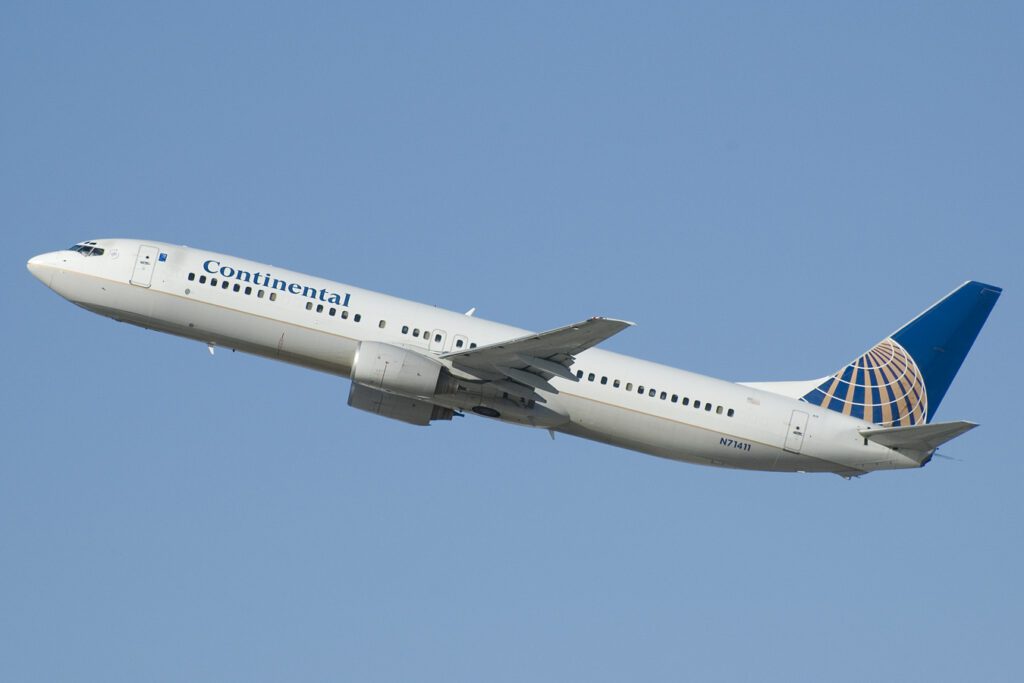Continental Airlines, a name once synonymous with reliability, innovation, and comfort in the airline industry, traces its origins to the depths of the Great Depression. Founded in 1934 by Walter T. Varney as “Varney Speed Lines,” the airline underwent several transformations before growing into a major player in the skies. Its story is one of resilience, expansion, mergers, and ultimately, a legacy cemented by its eventual union with United Airlines.

The Early Years: Varney Speed Lines
Continental Airlines began under the leadership of Walter T. Varney, an aviation pioneer who had previously founded United Airlines. Varney Speed Lines operated a small fleet, primarily focusing on mail transport routes under government contracts. Its initial service area covered parts of the American Southwest, including El Paso, Texas, and Pueblo, Colorado.
In 1937, Robert F. Six, who would later become the face of the company, purchased a controlling interest in the airline. Under his guidance, the company adopted the name “Continental Airlines” in 1937, reflecting Six’s ambitions to grow the carrier beyond its regional roots.
The Six Era: Expansion and Innovation
Robert Six transformed Continental Airlines from a modest regional carrier into a significant force in the airline industry. By the 1940s, Continental had expanded its route network, including flights to Denver, Kansas City, and Chicago. Six’s vision was simple but bold: to compete with the major carriers by providing exceptional service and reliability.
The 1950s and 1960s were a period of rapid growth for Continental. The airline introduced jet aircraft, with the Boeing 707 becoming part of its fleet, and expanded its services internationally. Continental Airlines became known for its high level of customer service and luxurious in-flight experience, often seen as more attentive and upscale compared to its larger competitors.
One of the airline’s most significant milestones during this period was the introduction of the “Golden Jet Service” in 1959. This first-class service, complete with gourmet meals and attentive service, became a symbol of the airline’s commitment to comfort and quality.
Navigating Challenges: The 1970s and 1980s
The 1970s brought significant changes to the airline industry with the advent of deregulation. While some carriers struggled to adapt, Continental Airlines managed to survive by embracing strategic expansion and route acquisitions. However, deregulation also brought intense competition, which caused financial difficulties for the airline.
In the early 1980s, Continental underwent a major financial restructuring under new ownership. Frank Lorenzo, through Texas Air Corporation, acquired the airline and implemented cost-cutting measures that helped streamline operations but resulted in several labor disputes and a contentious relationship with unions.
Despite these challenges, Continental Airlines remained resilient. The airline expanded to serve routes in Asia, Europe, and the South Pacific, establishing itself as a truly global carrier. In 1987, Continental even began its alliance with America West Airlines, a precursor to the eventual wave of airline alliances that would dominate the industry decades later.
The 1990s: A New Era of Growth
Continental Airlines faced tough times entering the 1990s, with financial instability and operational challenges. However, a new leadership team under CEO Gordon Bethune revitalized the company. Bethune’s approach focused on customer satisfaction, operational efficiency, and branding. Continental became known for its improved on-time performance and customer service, pulling itself out of bankruptcy and becoming profitable again.
During the 1990s, Continental added more routes, particularly to Europe and Latin America, further cementing its status as a global airline. The airline also introduced its famous “Work Hard, Fly Right” campaign, which became a hallmark of its brand and resonated with both frequent flyers and casual travelers alike.
Merger with United Airlines: The End of an Era
By the early 2000s, Continental had established itself as one of the top U.S. airlines. However, the economic recession of 2008, coupled with rising fuel prices and changing market conditions, prompted consolidation in the airline industry. In 2010, Continental Airlines merged with United Airlines, creating one of the largest airlines in the world.
The merger marked the end of Continental’s independent operations, with the combined airline continuing under the United Airlines name. The deal allowed the new airline to serve a more extensive global network and consolidate resources in a competitive industry.
Legacy and Impact
Continental Airlines left an indelible mark on the airline industry. Known for its customer service, innovative approach to air travel, and strong leadership under Robert Six and Gordon Bethune, Continental played a vital role in shaping modern air travel. Though the Continental name no longer graces the skies, its legacy endures through United Airlines, and its influence can still be felt across the industry.
From its early days as a regional mail carrier to its rise as a global airline powerhouse, Continental Airlines’ history is a testament to perseverance, adaptability, and a commitment to excellence. The company may have merged, but its story remains a cornerstone of aviation history.












